|
|
| E-mail this page to a friend | Tell me when this page is updated |
Labna, Sayil and Xlapak
These three sites are also on the Ruta Puuc. As I recall, the entrance price was 22 NP each. On the roundtrip Ruta Puuc bus tour from Merida, you were given, 30, 30 and 20 minutes respectively at each of the sites.
Labna
Labna is the eastern most of the Ruta Puuc sites. It is almost due south of Ticul, Yucatan.
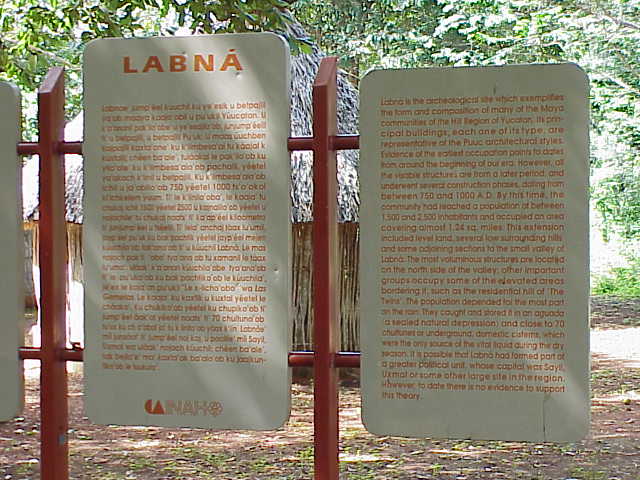
The entrance to Labna.
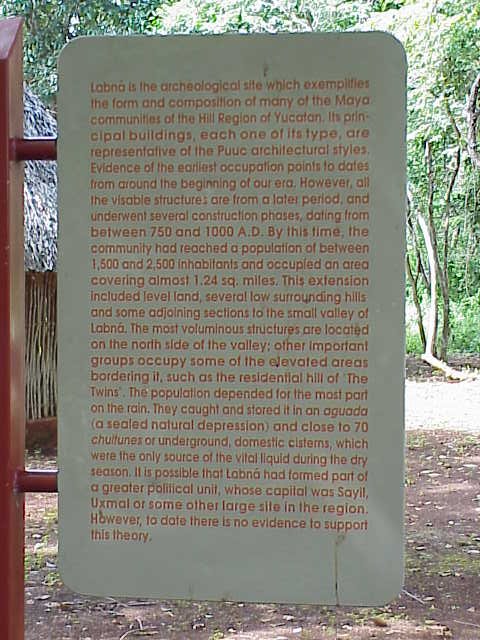
A detailed look at the sign.

Perhaps the most famous of the Labna structures is the Arch.
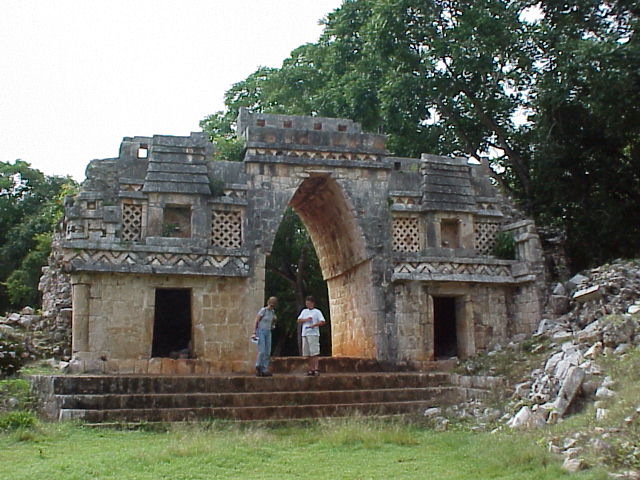
This is the other side of the arch looking southeast. The people (from England and Norway) give you an idea of the size of this arch.
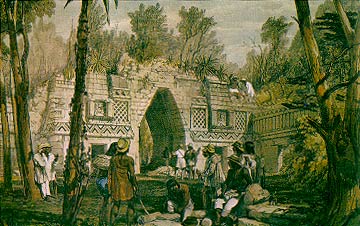
This is an old drawing of this arch.
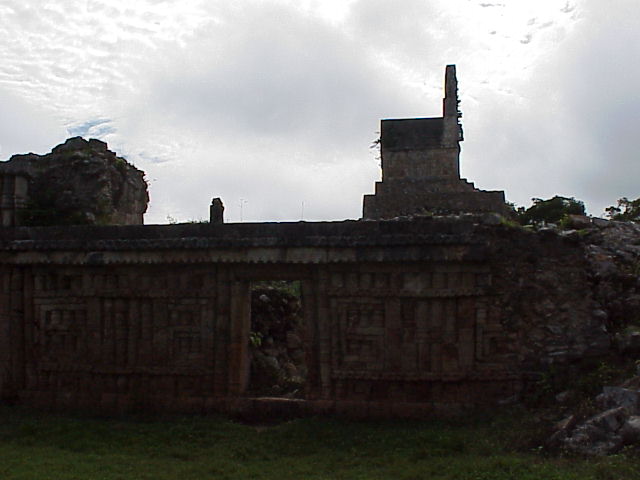
This is a side view of the Mirador, looking almost due east.
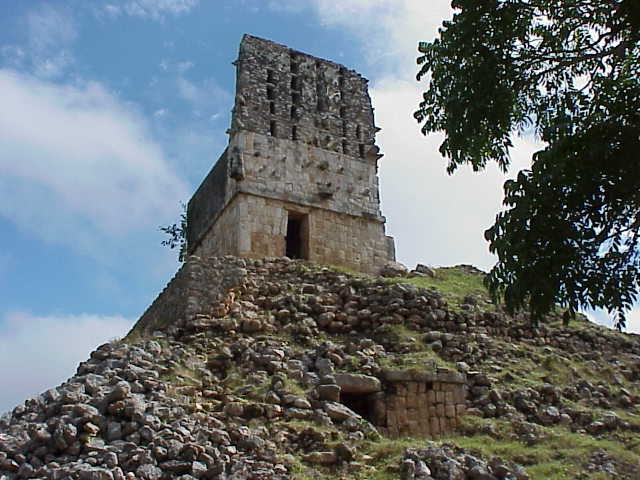
This view of El Mirador shows the still standing roof comb. According to the explorers Catherwood and Stephens in 1841 this is..."the most curious and extraordinary structure we had seen in the country."
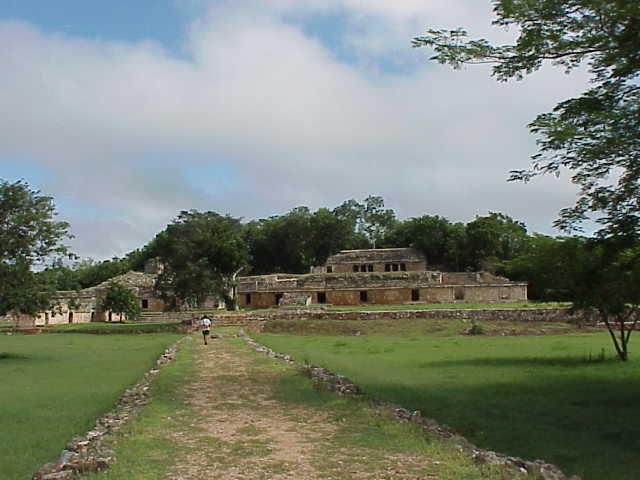
Looking north-north-east along the sacbe from between the Arch and the Mirador toward the Palacio.
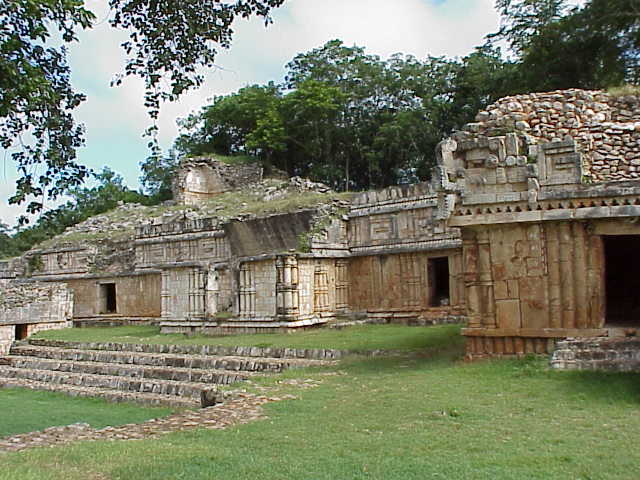
This is south end of the main section of the Palacio.

This facade features a person's head coming out of the mouth of a serpant.
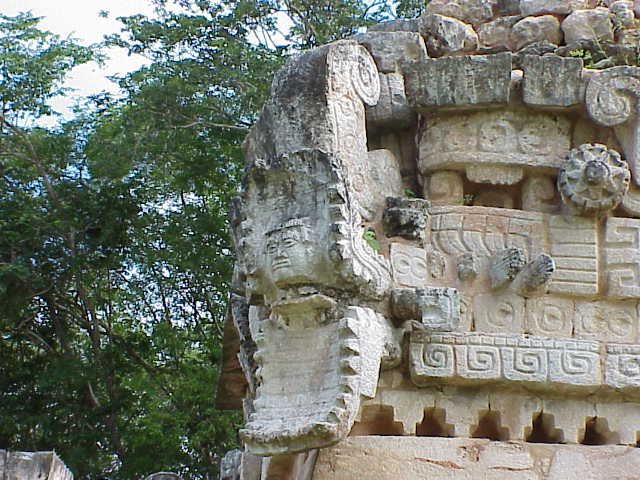
A detailed look at the head coming out of the serpant's mouth.
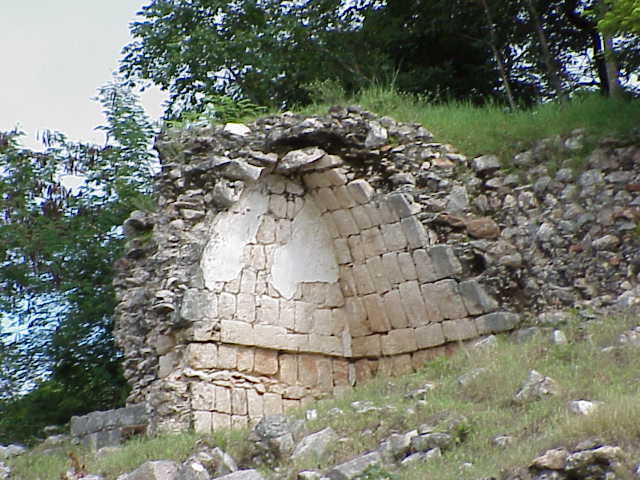
This is one of the vaulted arches of the Palacio.

This object comes out of the wall inside one of the rooms in the Palacio. It almost looks like a place to hang your headress.
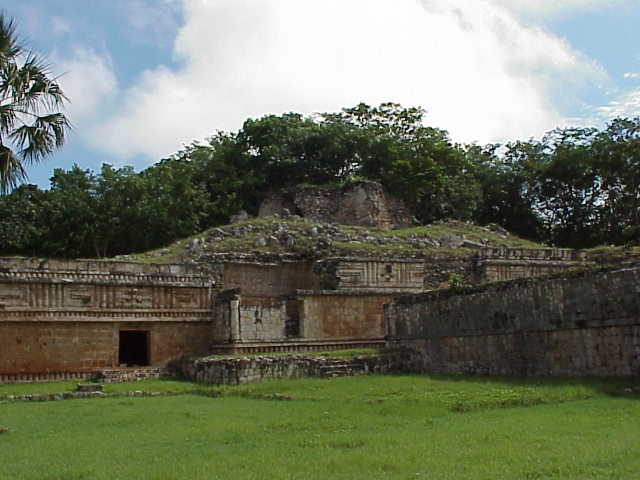
Another view of the Palacio looking north-north-east.
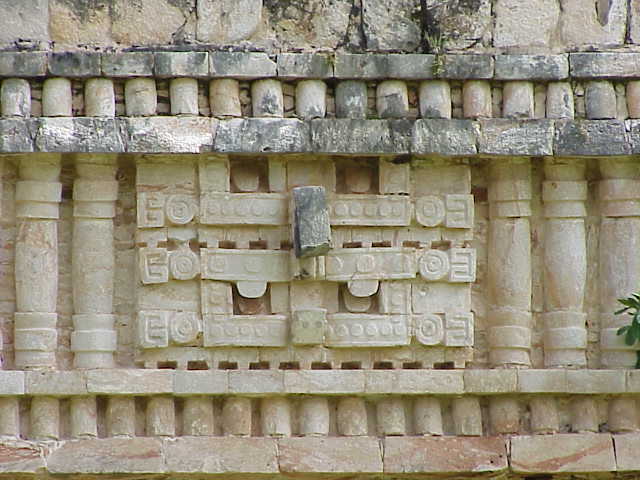
A close look at one of the Chac masks.
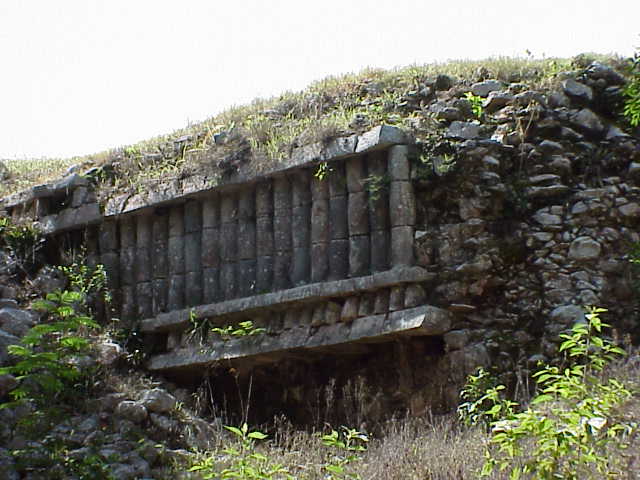
Some small columns on the north side of the Palacio.
Xlapak
Xlapak is the smallest of the sites on the Ruta Puuc tour. It is also known for being a haven for birds. A small white butterfly followed me for some distance while I was here. I also saw a stunning, flat-black butterfly with a large irradiant blue spot on it.
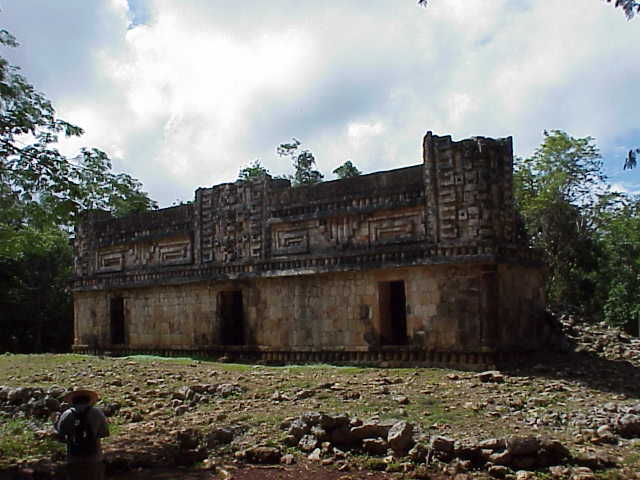
The Palacio at Xlapak.
Sayil
Sayil is an interesting site. I could not do it justice in the 30 minutes I was there. It is due south of Kabah and south-south-west of Ticul, Yucatan.
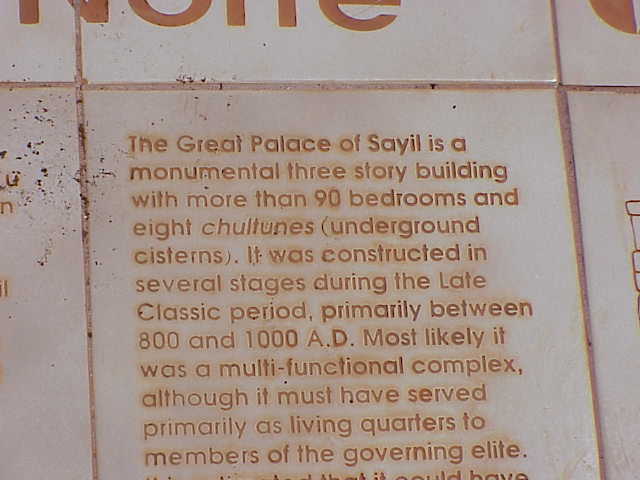
Part of the sign at the entrance.

This is the west end of the Grand Palacio.
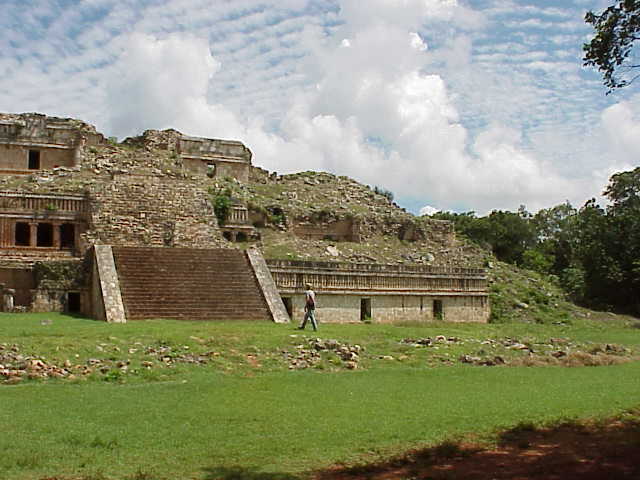
Looking north, this is the east end of the Grand Palacio.
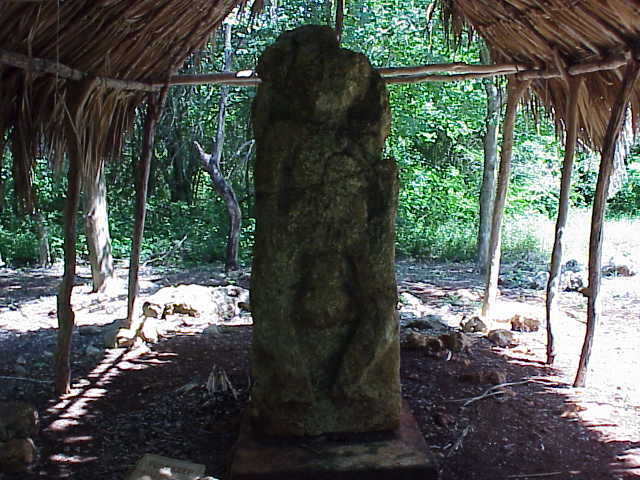
This is a view of Stele 9. Archaeologist believe it is a phallic symbol. As my daughter would say, "well, duh."
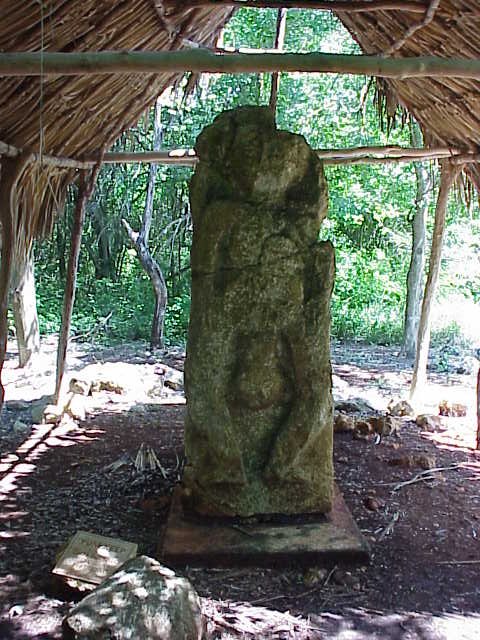
Amother view of Stele 9.
Click here for the Main Page (Page 1)
Click here for Chichen Itza (Page 2)
Click here for Kabah (Page 3)
Click here for Uxmal (Page 4)
Click here for Palenque (Page 6)
Click here for Xpujil, Becan and Museo de la Cultura Maya (Page 7)
Click here for Travel Tips & Bus Info (Page 8)
Click here for Page 9 (not active yet)
Click here for Page 10 (not active yet)
Phil Konstantin
mayatrip@americanindian.net
P.O.BOX 17515
SAN DIEGO, CA 92177-7515
United States
This page has been visited times, since July 26, 2001.